DLM0NSB120HY2

Noise suppression technologies/case study introduction (Consumer)
INDEX
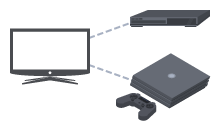
HDMI is a digital interface using differential signaling that was designed for the transmission of digital video and audio. It is widely used throughout the audio-visual market. HDMI 2.1 is an extension of HDMI 2.0, and it supports speeds that are twice as fast as HDMI 2.0.
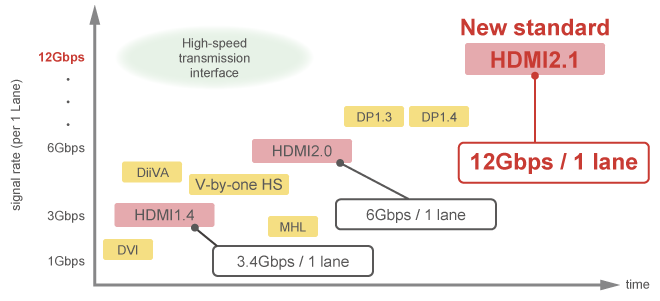
HDMI 2.1 has a maximum bandwidth that is about 2.7x that of HDMI 2.0, and its maximum signal transmission speed per lane is twice that of HDMI 2.0.
Whereas HDMI 2.0 consists of three data lanes and a clock lane, HDMI 2.1 does not have a clock lane, and it consists of four data lanes.
| HDMI2.0 (conventional standard) | HDMI2.1 (new standard) | |
| Maximum data rate | 18 Gbps (6Gbps/lane ×3) | 48 Gbps (12Gbps/lane ×4) |
| number of lanes | data 3 lane clock 1 lane |
data 4 lane clock 0 lane |
| connector, cable | specified by the conventional standard | new (category 3) upward compatibility |
| receiver equalizer | must | must |
In this way, HDMI 2.1 transmits signals faster than before, and so care must be taken to ensure that the signal quality is not harmed when implementing noise suppression measures.
Two noise issues are conceivable when HDMI communication is performed.
Radiation noise①:
Noise originating from HDMI interferes with the Wi-Fi antenna inside the equipment, reducing the Wi-Fi communication sensitivity (Intrasystem EMC)
Radiation noise②:
Noise is radiated from the HDMI equipment or cable (Emissions)
This study focuses on the intrasystem EMC of radiation noise ① and examines corrective actions for it.
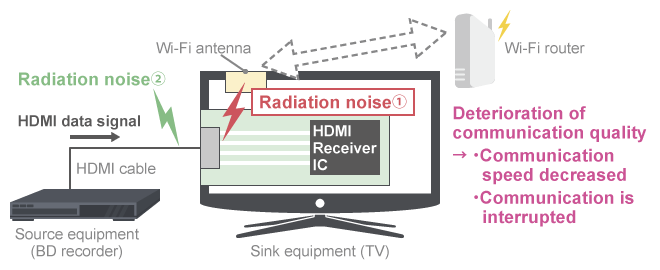
If normal noise filters are used for high-speed differential signaling lines like HDMI, the signal quality will deteriorate, and the signals will not be transmitted properly. For this reason, common mode choke coils (CMCC) are a suitable solution. Because HDMI signals are high speed, we should select a CMCC that is best suited for high-speed signals.
CMCCs are installed near the output pins of the IC at the HDMI source side and near the connectors at the sink side. The source-side CMCC installed near the IC can suppress the common mode noise generated from the transmission ICs at the source side by preventing the propagation of common mode noise at the sink side.
The sink-side CMCC can suppress the common mode noise generated from the HDMI signal wiring of the sink equipment by preventing common mode noise from entering the Wi-Fi antenna.
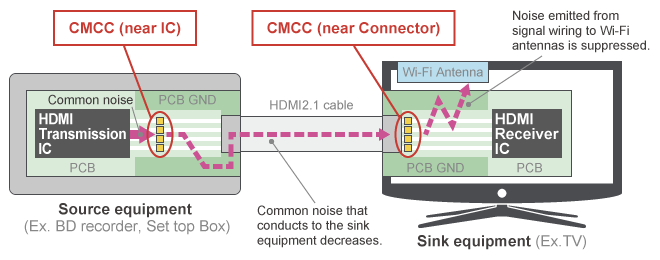
First, we verified how much HDMI communication affects Wi-Fi. We confirmed that, when HDMI 2.1 communication was started, the Wi-Fi reception sensitivity dropped by 6 to 10 dB in the 2.4 GHz and 5 GHz bands. When noise actually entering the Wi-Fi was confirmed, we found that it overlapped with the 2.4 GHz and 5 GHz bands.
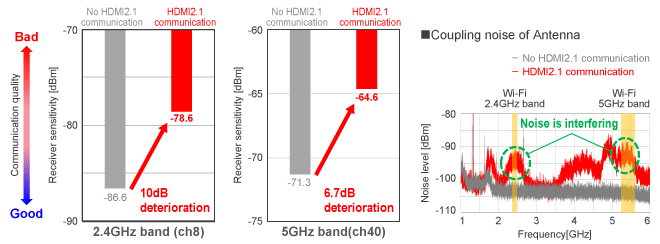
Mounting of CMCCs (DLM0NSB120HY2) showed an improvement of 3 to 4 dB.
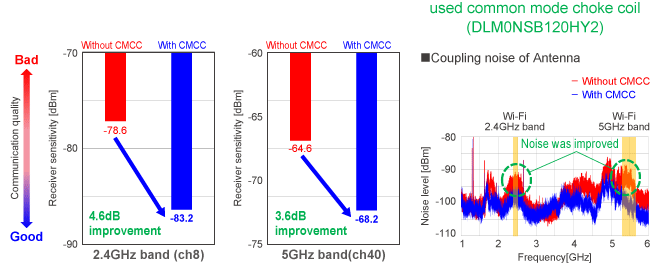
Next, we examined noise suppression measures for radiation noise.
First, we checked for any differences in the noise spectra for HDMI 2.0 and HDMI 2.1.
This showed us that higher frequency noise occurred in HDMI 2.1.
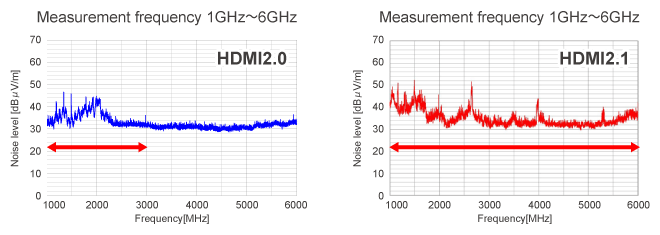
Mounting a CMCC (DLM0NSB120HY2) to the source side enables removal of HDMI 2.1 noise.
Radiation noise is still left after using a CMCC, but most of this noise was radiation noise of the DRAM installed separately on the board of the source equipment.
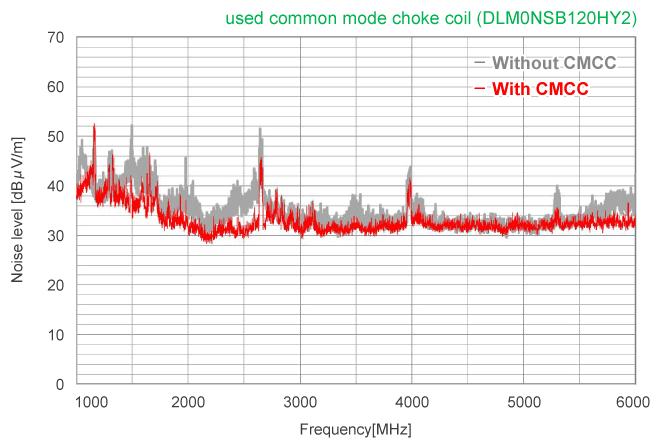
The eyemask test for HDMI 2.1 showed that the signal waveform was identical even after using CMCCs.
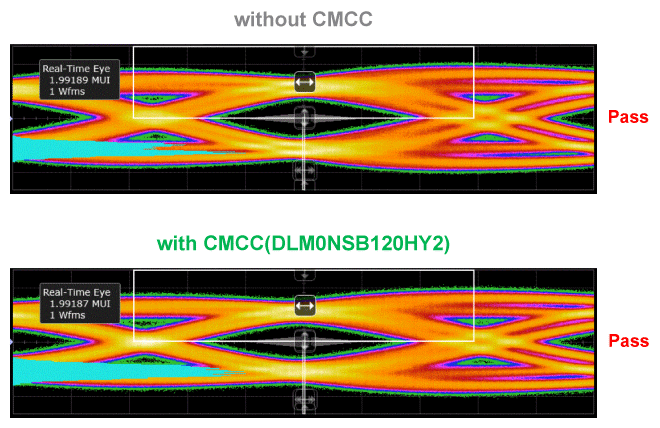
The AC common mode noise was reduced by 47% by using CMCCs.

An issue arose where the Wi-Fi reception sensitivity dropped during HDMI 2.1 communication, but this was improved by using CMCCs.
In HDMI 2.1, radiation noise occurred in the range from 1 GHz to 6 GHz, but this was improved by using CMCCs.
Inserting CMCCs had no effect on the eyemask test.
Use of CMCCs reduced the AC common mode voltage.